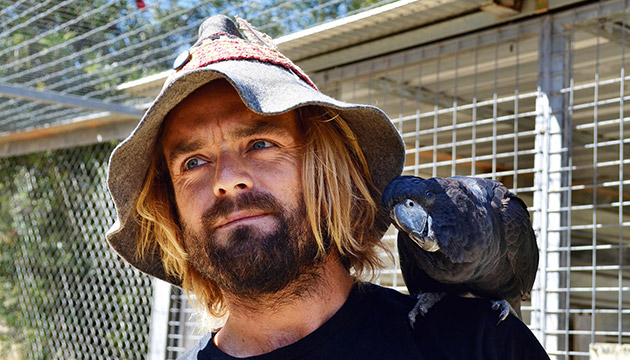In Western Australia black cockatoos are threatened by a mix of land clearing, industry and harsh environmental conditions.
Story By Brooke Olive
Three of Western Australia’s iconic black-cockatoo species remain at risk of extinction despite the efforts of organisations that are trying to increase forest conservation around the state. The Carnaby’s, Baudin’s and Forest Red-tailed black cockatoos are all in decline. Habitat loss due to development for new housing projects, mining and logging have forced the birds into smaller areas and effectively blocked them from previous breeding and feeding grounds. The Carnaby’s are especially affected as they migrate between the Swan Coastal Plain and the wheatbelt's south-west, regions that are currently being cleared.
The Baudin’s cockatoo has become a nuisance to orchard farmers across the state where illegal shooting remains a common practice despite fines of up to $10,000 per bird. Endemic only to south-west Western Australia, the Forest Red-tailed must compete with other species for nesting hollows for breeding. Add to this climate change, fatal impacts by vehicles, recent droughts and fires that have resulted in a loss of feeding grounds, and these beautiful birds face a challenge to survive.
Carabooda farmer Connie Canzirri has watched the slow yet steady urban sprawl north of Perth over the past 30 years. Her husband Angelo has farmed in the area for 61 years and remembers a time when it was entirely surrounded by bushland. Connie cherished the peace and serenity of living near the coast in a rural area. Now new suburbs are popping up minutes away and previously forested areas are routinely cleared.
“We were so isolated and the only other local residents were farmers or market gardeners,” Connie says. “Now plenty of farms have been sold off into smaller lots and more land cleared. These small-acre blocks house hobby farmers and tree-change retirees and as a result we are closer to suburbia than you would think. I believe there has been a steady decline in our natural wildlife in the past 15 years, in particular our black cockatoos, swamphens and also turtles.”
Connie says the cockatoos used to regularly damage local crops. “Now we rarely see them and as new grandparents we are starting to recognise the importance of conservation for our future generations,” she says. “Just like kangaroos or bilbies, these are another species we wouldn’t want our grandkids to grow up without.”
This Story is from Issue #87
Outback Magazine: Feb/Mar 2013










